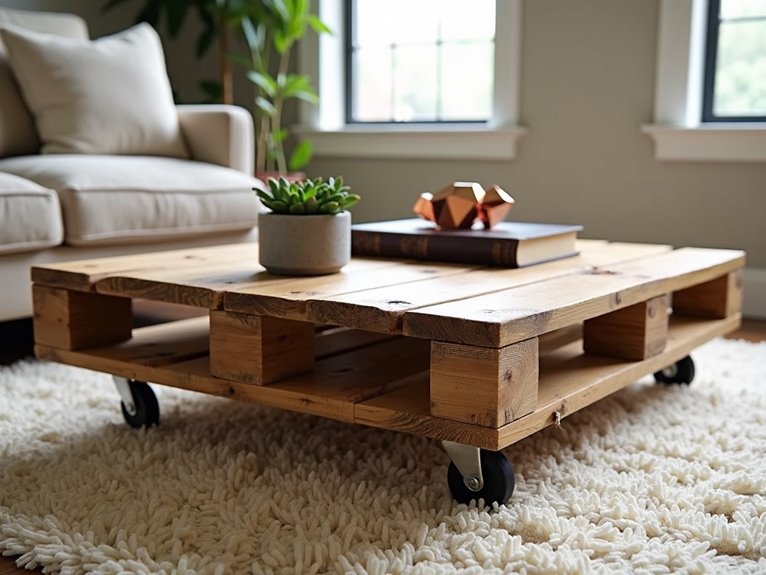Floor tables offer a sophisticated blend of form and function, transforming living spaces with their unique presence. From minimalist Japanese-inspired designs to bold industrial statements, these DIY projects present opportunities for both novice and experienced craftspeople to create distinctive pieces. The versatility of materials – whether incorporating reclaimed wood, polished concrete, or vintage elements – allows for endless creative possibilities. Each of these twenty innovative ideas represents a chance to craft furniture that not only serves its purpose but also tells a story, making your space uniquely yours.
Reclaimed Pallet Floor Table
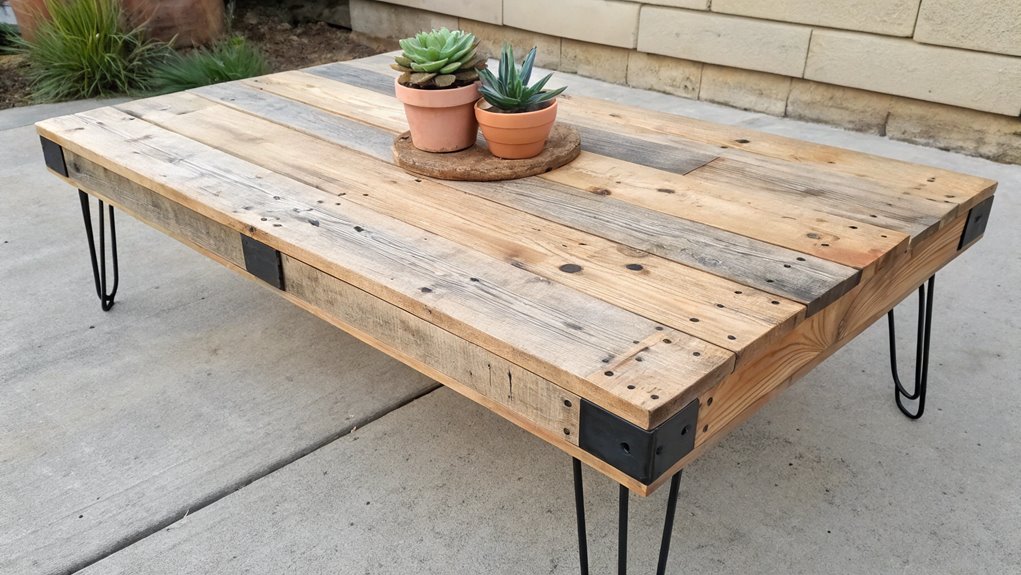
While reclaimed wooden pallets have become increasingly popular in DIY furniture projects, they make particularly excellent material for creating a rustic floor table. You can easily transform a sturdy pallet into a charming low table by sanding it smooth, reinforcing the base, and adding a protective finish. For extra flair, try painting it or adding wheels – your creativity is the only limit!
Concrete and Wood Fusion
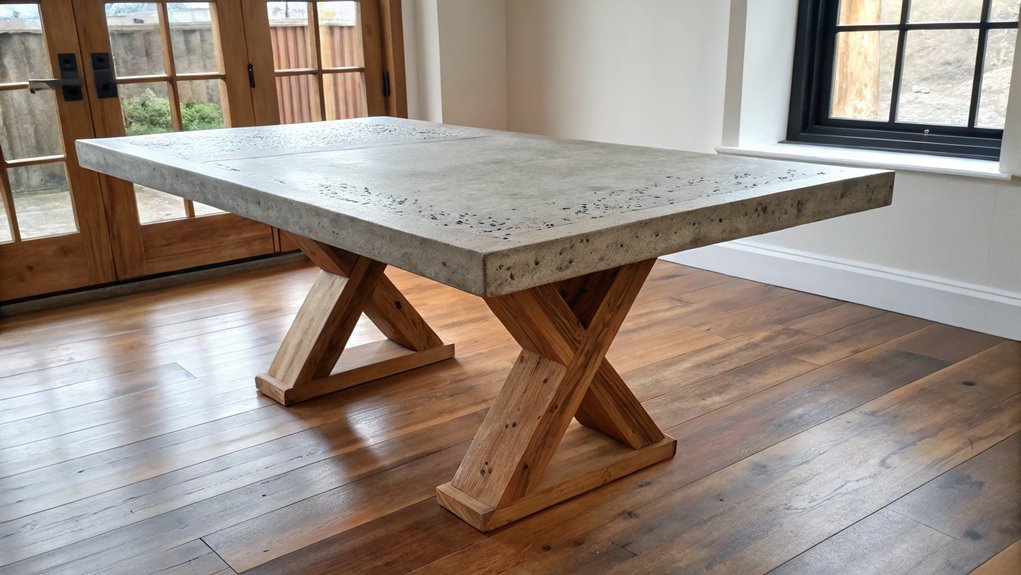
For a truly striking floor table design, combining concrete and wood creates a sophisticated fusion of industrial and natural elements. You can achieve this look by pouring concrete into a wooden frame to create the tabletop, then adding wooden legs for support. The contrast between the smooth, cool concrete and warm wood grain creates an eye-catching piece that’ll become your room’s focal point.
Industrial Pipe Base Design
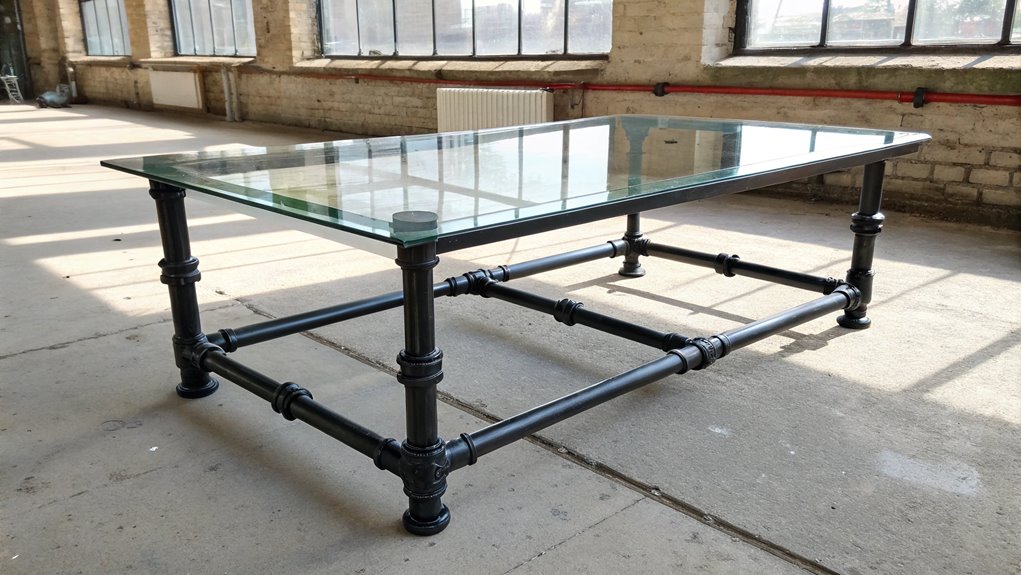
The industrial pipe base design offers a bold statement for floor tables while providing exceptional stability and strength. You can easily create this look using black iron pipes and fittings from your local hardware store. Simply connect the pipes using flanges, tees, and elbows to form your desired shape. The best part? No welding is required, and you can adjust the height to your needs.
Japanese-Style Tea Table
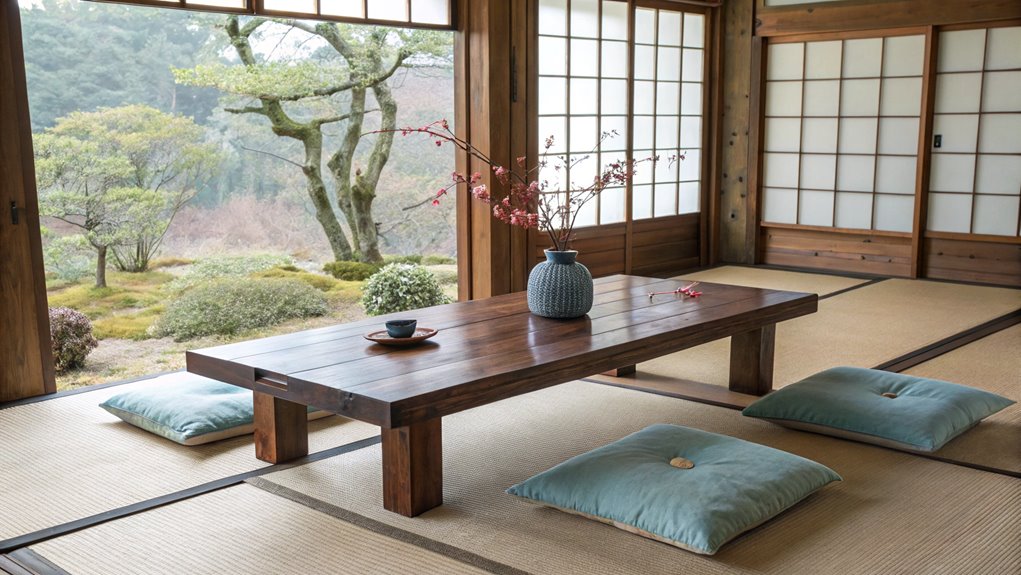
Moving from industrial ruggedness to minimalist elegance, Japanese-style tea tables embody simplicity and grace in floor-level dining. You can create your own chabudai (traditional low table) using a single piece of smooth-sanded wood and four short, angled legs. Add a natural finish to highlight the wood grain, and consider installing folding legs for easy storage when not in use.
Live Edge Slab Creation
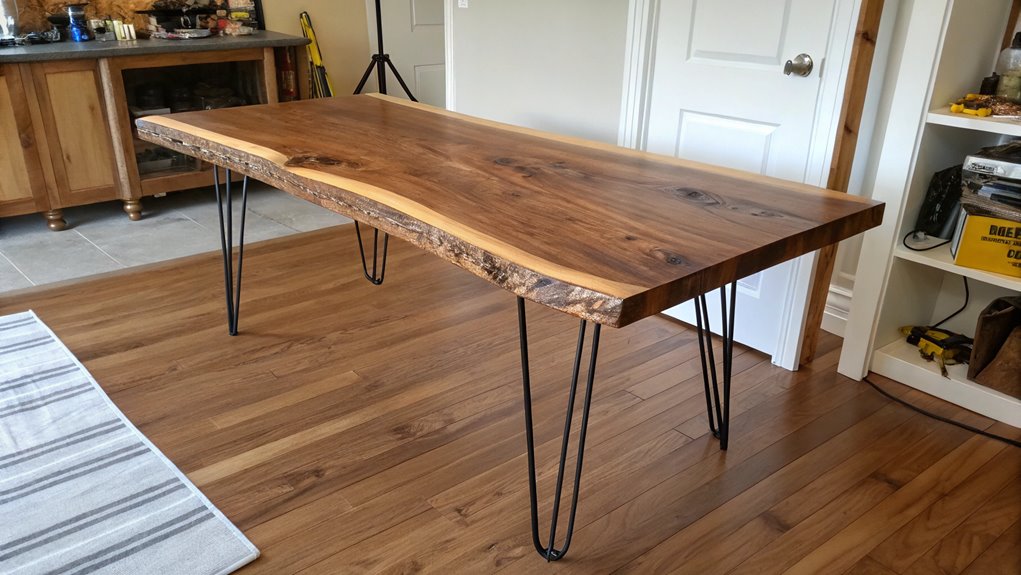
Creating a live edge slab table offers a striking blend of natural beauty and modern design sensibility. You’ll need to start with a raw wood slab, carefully sand the natural edge to preserve its organic shape while smoothing rough spots. Add hairpin or wooden legs at your preferred height, then seal the wood with several coats of polyurethane for a durable, low-to-the-ground statement piece.
Modern Geometric Floor Table
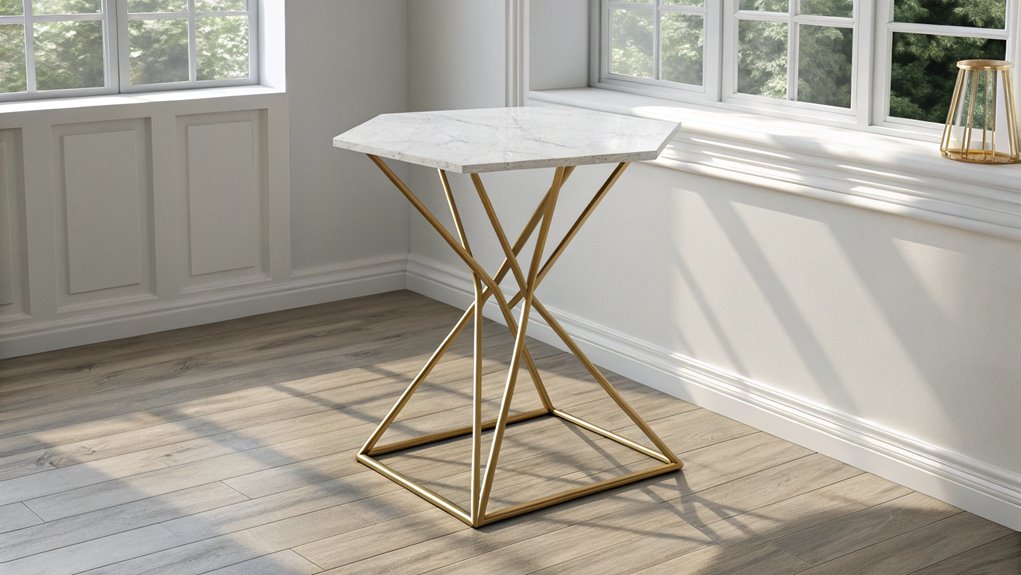
While natural edges showcase organic beauty, geometric designs offer clean lines and contemporary appeal. You can create a stunning floor table using basic geometric shapes like triangles, hexagons, or squares. Mix different wood types or add metallic accents for visual interest. A simple design with angled legs and a geometric tabletop pattern will give your space that modern, minimalist look you’re after.
Recycled Cable Spool Table
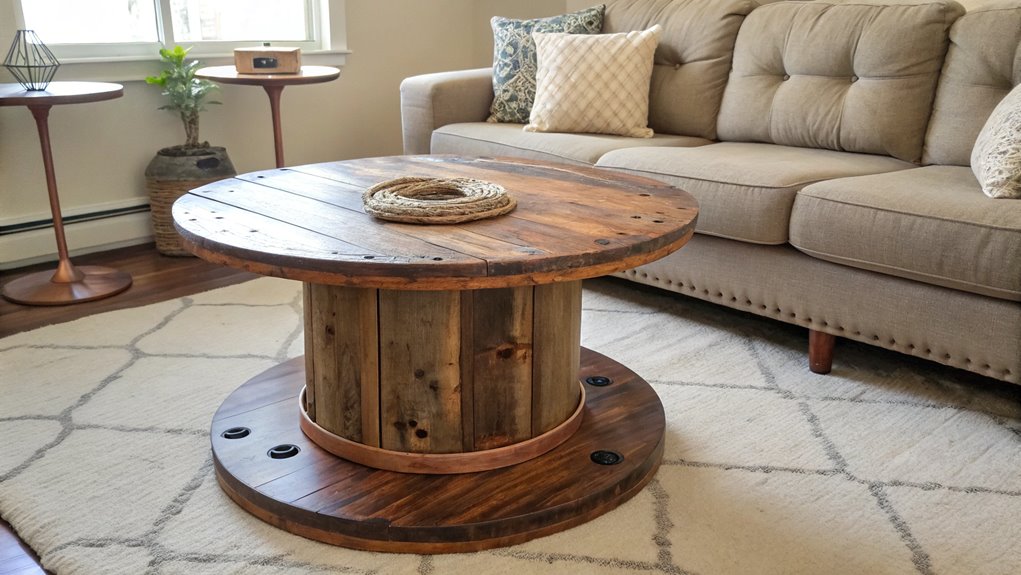
From industrial cast-offs to charming home furniture, cable spools can be transformed into unique floor tables with minimal effort and cost. You’ll love how easy it is to sand down the rough edges, add a fresh coat of stain or paint, and create a conversation piece for your living space. Consider adding casters for mobility or a glass top for extra protection.
Resin River Floor Table
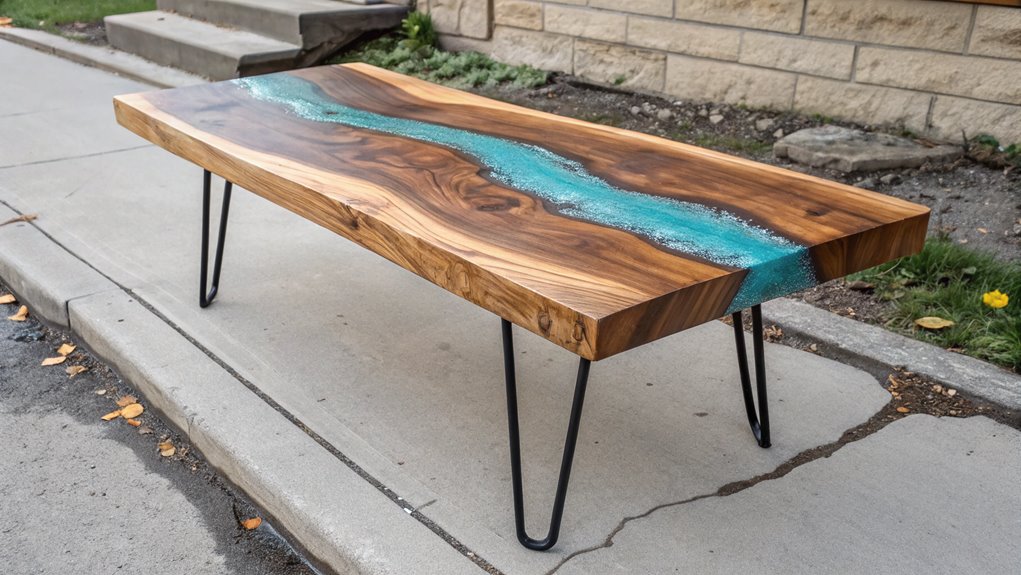
Renowned for their stunning visual appeal, resin river floor tables combine natural wood slabs with vibrant epoxy resin to create striking pieces of functional art. You can customize your table by choosing colored resin that flows between raw wood edges, mimicking a river’s path. With proper tools and patience, you’ll transform two pieces of live-edge wood into a conversation-starting masterpiece for your home.
Bamboo Mat Table
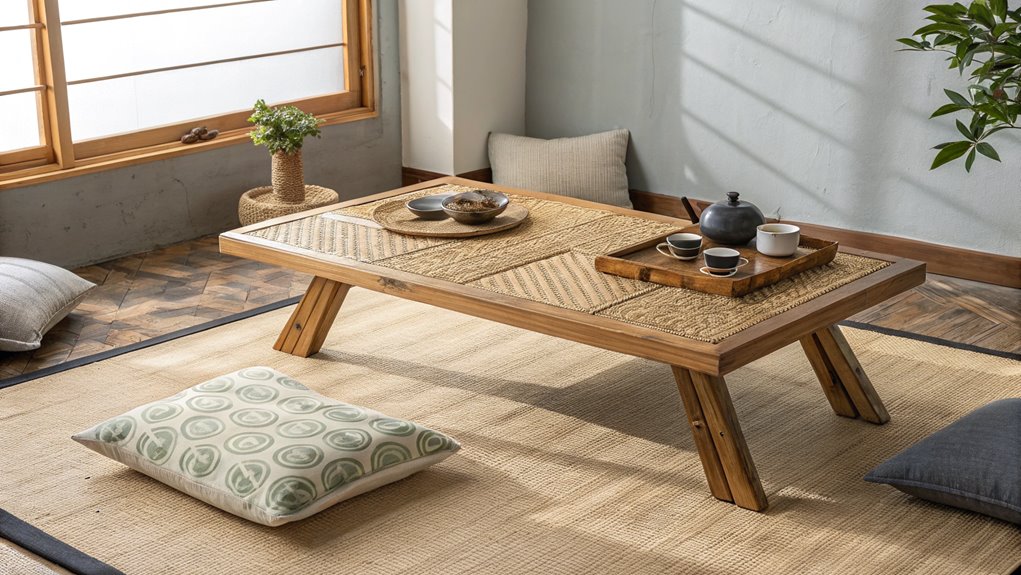
A sustainable and lightweight floor table option, the bamboo mat table combines traditional Asian design elements with modern functionality. You’ll love how easy it is to build one using rolled bamboo mats from your local home store. Simply attach the mat to a wooden frame using wood glue and finishing nails, then add sturdy legs. The result is an eco-friendly conversation piece that’s perfect for casual dining.
Floating Corner Floor Table
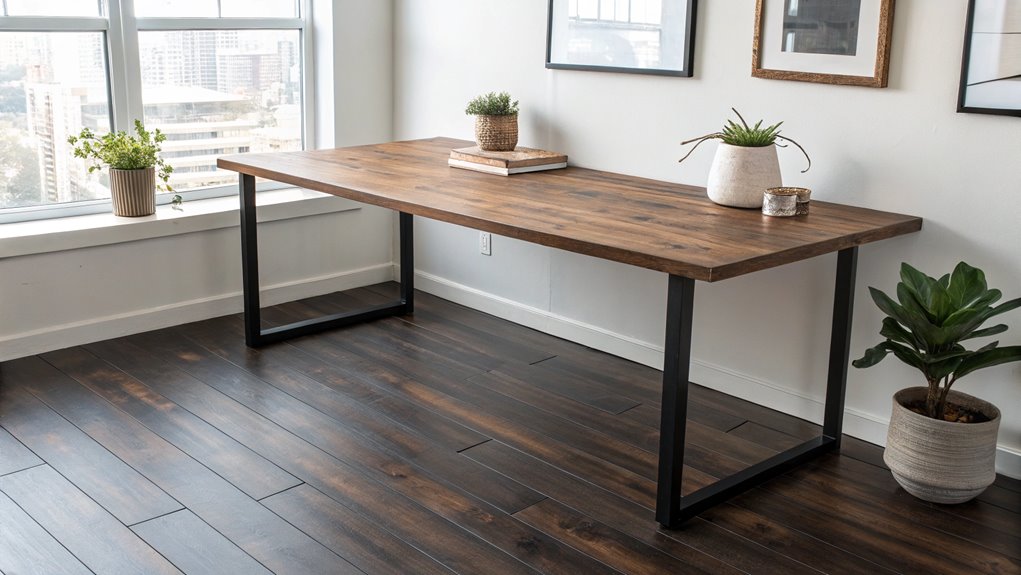
While bamboo offers natural appeal, the floating corner floor table provides a modern architectural solution for maximizing space. You can create this sleek piece by mounting L-brackets directly into your wall studs, then securing a custom-cut piece of wood or acrylic on top. This clever design appears to float in the corner, adding both function and visual interest to your room.
Metal and Glass Design
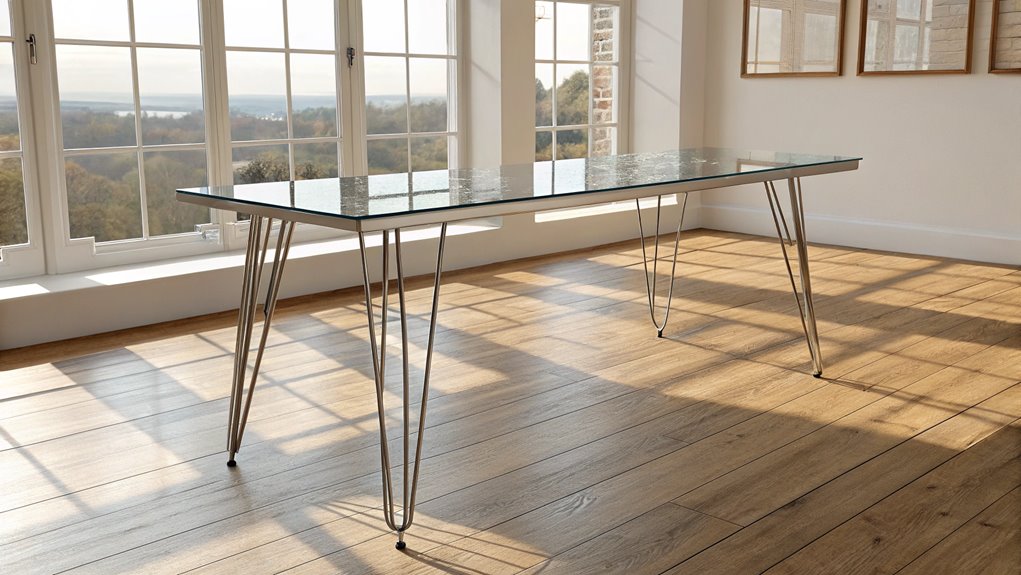
The combination of gleaming metal and tempered glass creates a sophisticated floor table design that blends industrial elements with contemporary aesthetics. You can easily craft this modern piece using steel pipes for the base and a custom-cut glass top. To add stability, attach rubber feet to the metal base, and guarantee your glass is thick enough for daily use.
Mosaic Tile Surface Table
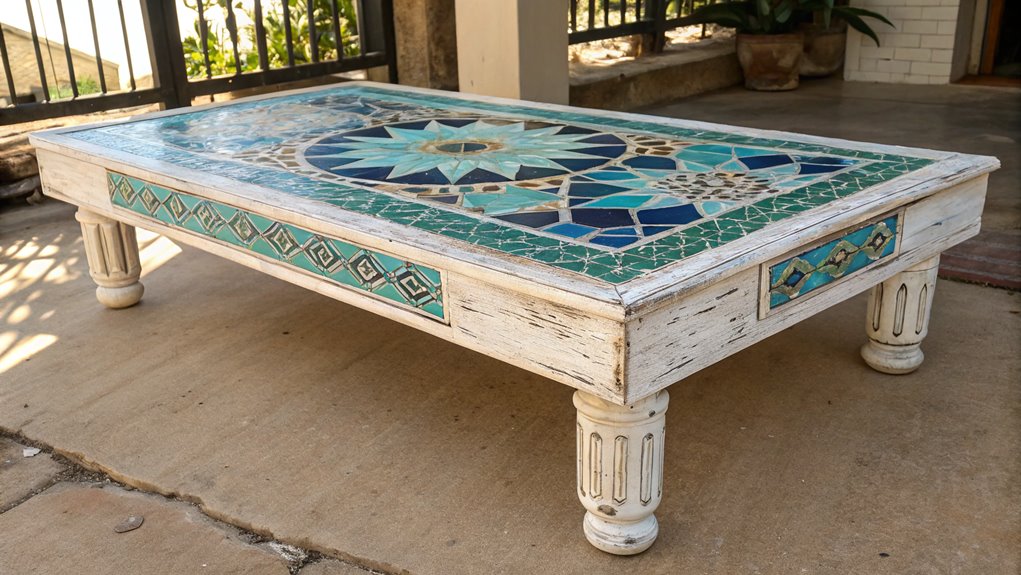
Creating a mosaic tile surface brings artistry and personality to your floor table project. You’ll need ceramic tiles in your chosen colors, tile adhesive, and grout. Start by arranging your design on paper first, then transfer it to your table surface. Break tiles into smaller pieces for intricate patterns, or use pre-cut mosaic tiles for a simpler approach. Seal your finished work for durability.
Vintage Door Transformation
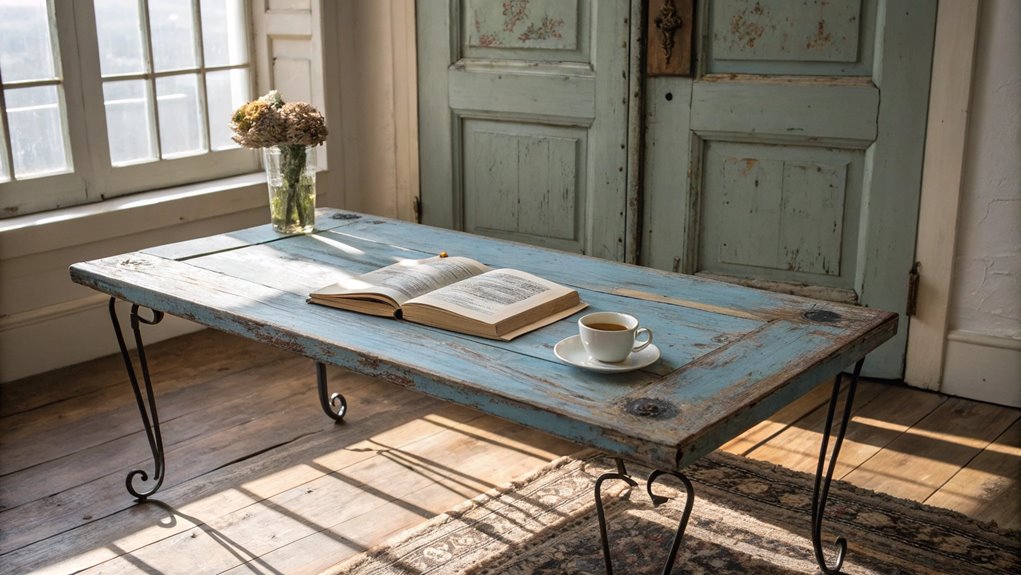
Transforming an old wooden door into a stunning floor table offers a remarkable way to preserve architectural history while creating functional furniture. You can start by cleaning and sanding your vintage door, then attach sturdy legs of your choice – hairpin legs work great! Add a protective finish to seal the wood’s original patina, and you’ll have a conversation piece that brings character to any room.
Woven Rope Floor Table
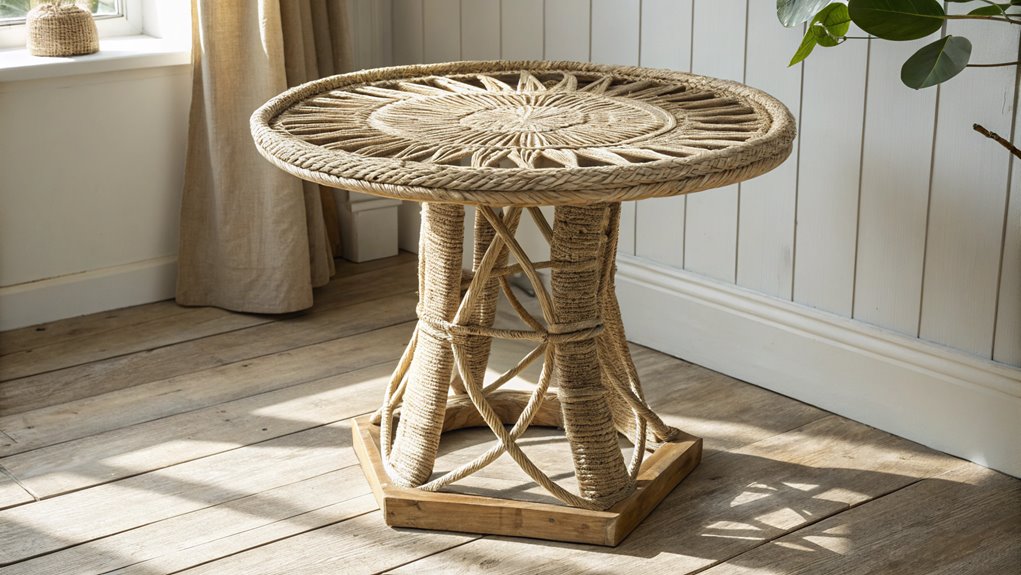
Making a woven rope floor table brings nautical charm and textural interest to your living space. Start with a round wooden table base and wrap thick nautical rope in tight circles, securing it with glue as you go. You’ll want to weave the rope carefully, maintaining even tension throughout. Top it off with a glass surface to create a functional, conversation-worthy piece.
Minimalist Plywood Design
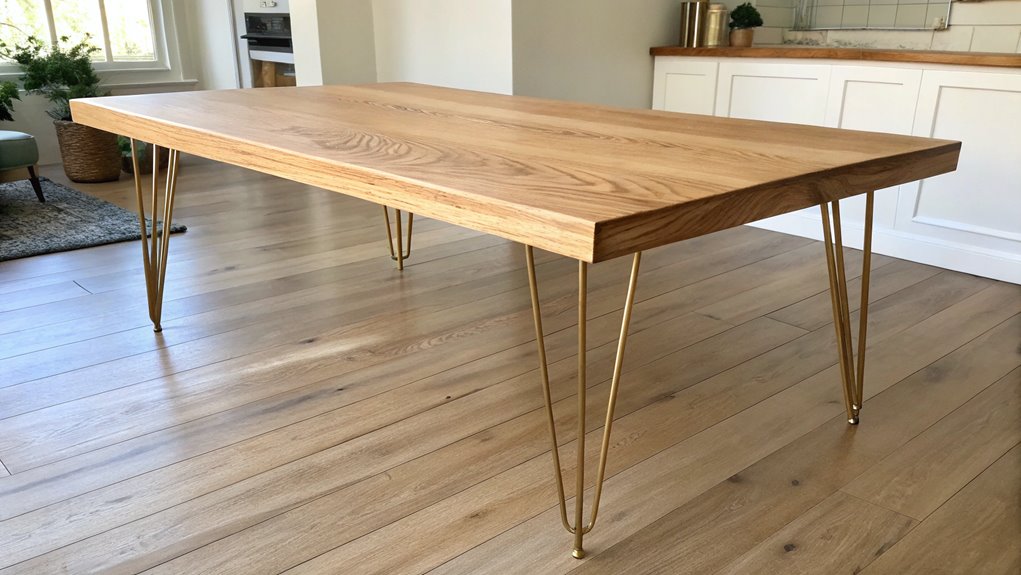
When simplicity meets functionality, a minimalist plywood floor table can elevate any modern living space. You’ll need just a few sheets of high-grade plywood, some basic tools, and a free weekend to create this sleek piece. Cut your plywood into a clean rectangular shape, sand the edges smooth, and add hairpin legs for that perfect mid-century touch.
Copper Pipe Frame Table
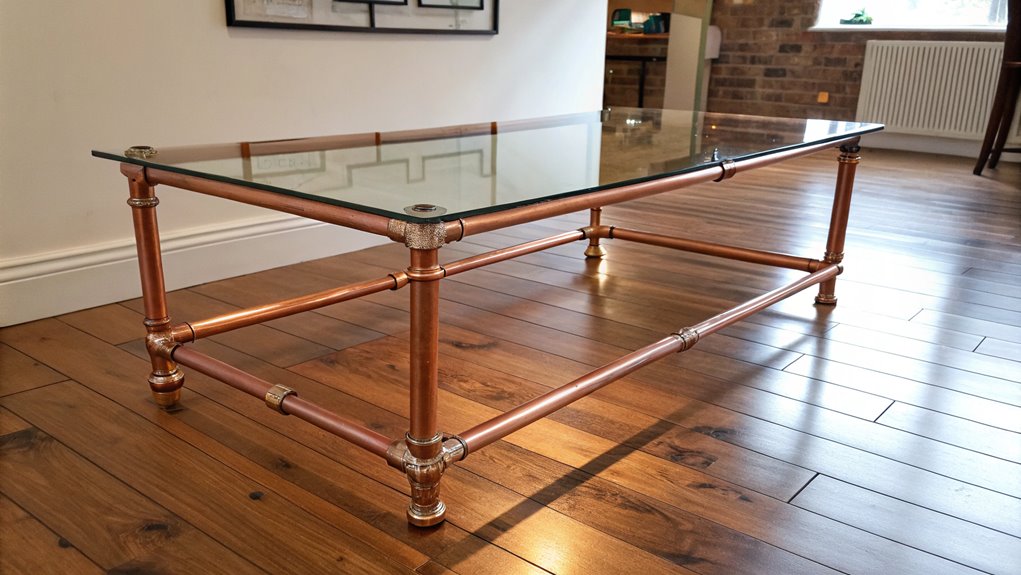
Looking to add an industrial-chic element to your home? A copper pipe frame table offers the perfect blend of modern style and DIY satisfaction. You’ll need copper pipes, fittings, and a tabletop of your choice – wood works beautifully. Simply cut the pipes to size, connect them using the fittings, and attach your chosen top. The warm glow of copper creates an eye-catching conversation piece.
Stained Glass Centerpiece
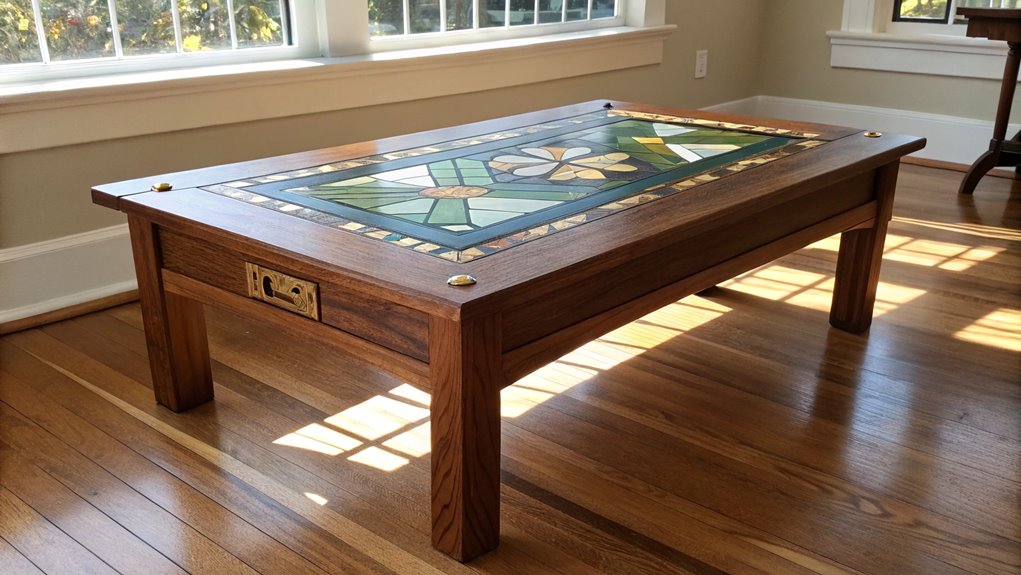
From industrial to artistic, a stained glass centerpiece table brings vibrant color and luminous beauty to your living space. You can create this stunning piece by carefully arranging colored glass pieces in a geometric pattern, securing them with copper foil and solder. Top it with tempered glass for safety, and you’ll have a unique conversation starter that catches light beautifully throughout the day.
Salvaged Window Table
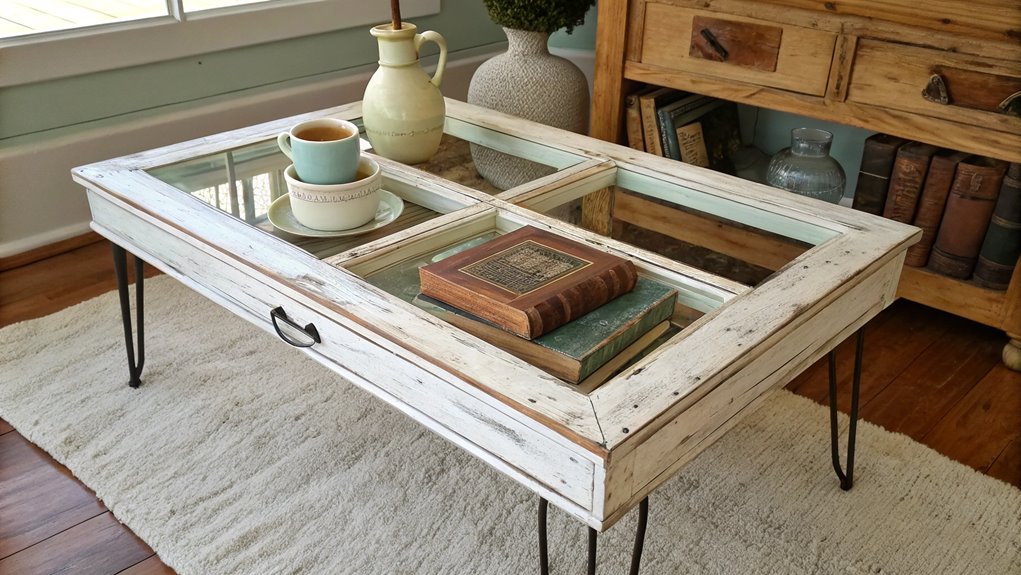
A salvaged window can be transformed into a charming floor table that merges vintage character with modern functionality. You’ll need to attach sturdy legs to your window frame and add a piece of tempered glass on top for safety. The original window panes create beautiful compartments perfect for displaying small treasures or seasonal decorations beneath the protective glass surface.
Driftwood Beach Style Table
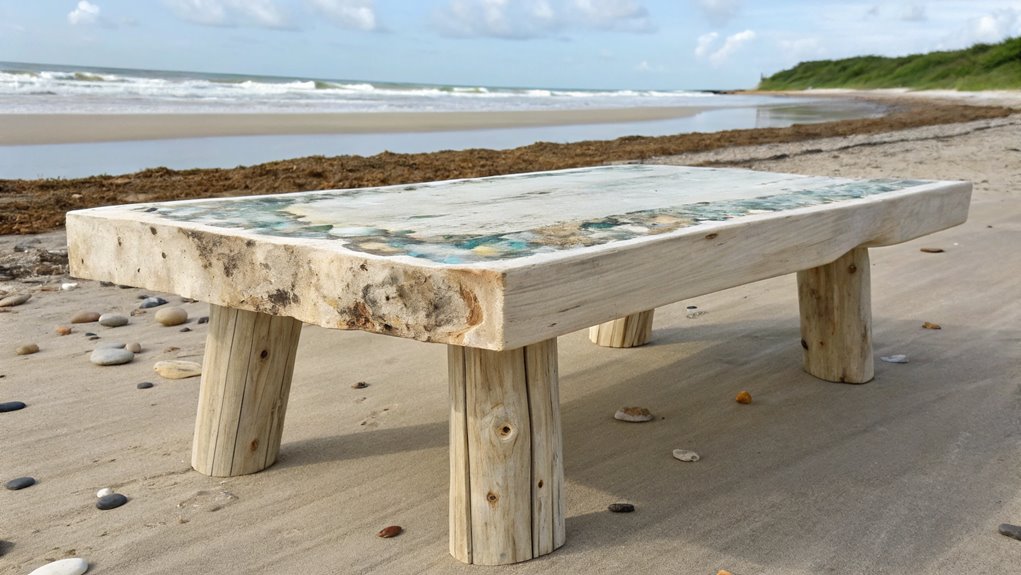
Create a stunning coastal-inspired floor table by incorporating weathered driftwood pieces as the base structure. You’ll need to collect sturdy driftwood pieces from the beach and thoroughly clean them. Arrange the pieces in a stable formation, securing them with marine-grade adhesive. Top it off with a round glass surface, and you’ll have a unique conversation piece that brings beachy vibes indoors.
Moroccan Inspired Floor Table
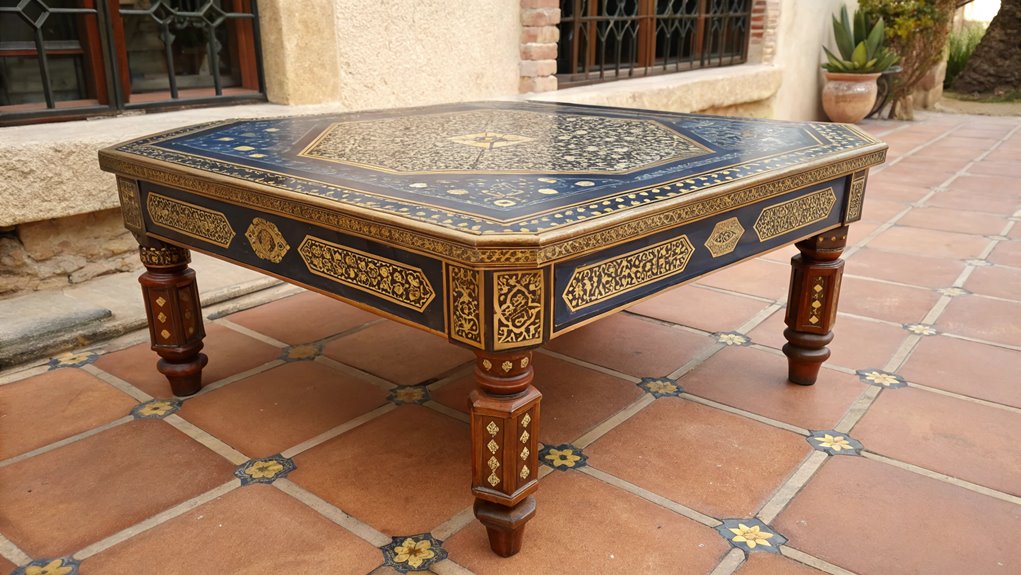
Transform your living space with an exotic Moroccan-inspired floor table that combines intricate patterns and rich cultural elements. Using a round wooden base, you can create this stunning piece by painting geometric patterns in bold jewel tones like turquoise, gold, and deep red. Add metallic accents and mosaic tiles around the edges for that authentic Moroccan bazaar feel in your home.
Frequently Asked Questions
What Tools Are Essential for a Beginner Starting DIY Floor Table Projects?
For DIY table projects, you’ll need basic tools like a drill with various bits, a measuring tape, pencil, and level for accuracy. A good quality saw (circular or hand) is vital for clean cuts. Don’t forget safety gear – protective goggles and work gloves. Sandpaper, wood glue, screwdriver set, and clamps round out your essentials. Start with these, and add more specialized tools as needed.
How Long Does It Typically Take to Complete a Floor Table Project?
A basic floor table project typically takes 6-8 hours to complete if you’re working at a steady pace. This includes measuring, cutting, sanding, and assembly. If you’re adding special features like built-in storage or complex designs, expect to spend 12-15 hours. Finishing touches like staining and sealing can add another 24-48 hours, mostly waiting for layers to dry between coats.
What’s the Average Cost Range for Materials in DIY Floor Tables?
The cost of DIY floor table materials typically ranges from $50 to $200, depending on your design choices. Basic tables using pine wood and simple hardware might cost around $50-75, while premium materials like hardwood, glass tops, or metallic finishes can push costs toward $150-200. You can save money by using reclaimed wood or repurposed materials, which might reduce expenses to $30-40.
Which Floor Table Designs Are Most Suitable for Small Living Spaces?
For small living spaces, consider foldable floor tables that can be tucked away when not in use. C-shaped or L-shaped designs work well against walls, maximizing corner spaces. Round floor tables are perfect for tight spots since they eliminate sharp corners. Multi-functional options, like floor tables with built-in storage or adjustable heights, help you make the most of limited space.
Are There Specific Maintenance Requirements for Different Floor Table Materials?
Different floor table materials need specific care to stay looking great. Wood requires regular dusting and occasional polishing to prevent scratches and dryness. Glass tables need frequent cleaning with appropriate solutions to avoid streaks and fingerprints. Metal surfaces should be wiped down to prevent rust and tarnishing. Concrete needs sealing periodically, while bamboo requires occasional oiling to maintain its natural sheen.
